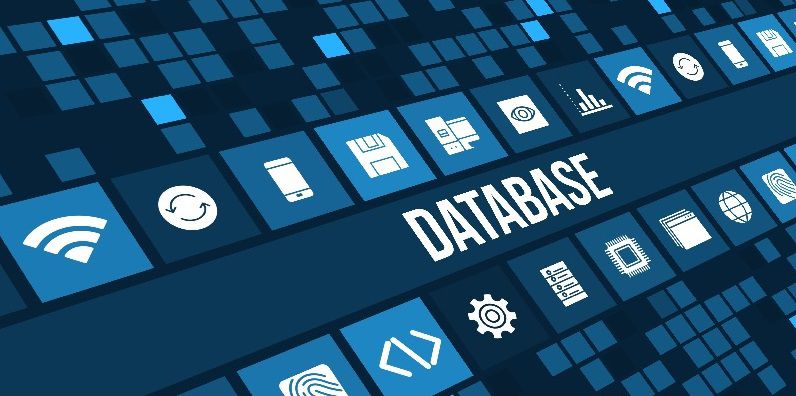Introduction to basic concepts of database systems
Data – The raw facts are called data. Here the word “raw" indicates that the given information is not processed.
Ex: Number 89 is data.
Information – Once the raw data is processed, then the processed data is known as information.
Ex: Sachin scored 89 in Computer Science; Here marks = 89 then it becomes information.
Knowledge – It refers to the personal experience and practical use of information.
Data/Information Processing
The process of converting the raw facts or the data, into meaningful information is called as data/information processing.
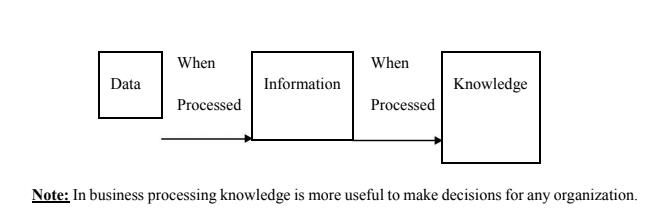
Difference between data and information
Introduction to Databases
Let’s start with the history of Database Systems
1950’s and early 1960’s:
- Data storage was through magnetic tapes.
- Processing huge data such as payroll management were automated and these data are stored on tapes.
- Punched card decks were used to input data and printers were used for output.
Late 1960’s and 1970’s:
- Hard disks were introduced and this allowed direct access to data to a large extent.
- As disks were introduced, this encouraged data structures such as lists and trees to be stored on disk.
- These data structures could be constructed and manipulated by programmers.
In the 1970’s – the Relational Model was defined by EF CODD.
In the 1980’s:
In the early 1980s, in the area of performance, the relational databases had become competitive with network and hierarchical database systems.
Early 1990’s:
- SQL language was designed primarily in the 1990’s and was used for the transaction processing applications.
- Decision making and querying re-emerged as a major application area for databases.
- Database vendors began to add object-relational support to their databases.
Late 1990’s:
Databases were deployed much more extensively and it has to support very high transaction processing rates with high reliability and 24/7 availability.
Database - A database is a collection of correlated data which are organized, for quick and easy access.
These are a few areas where some organizations use databases for their business activities in their day-to-day life.
- Banking: To manage customer information, account level information, loans and banking transactions.
- Airlines: Airlines were the first to use databases in a distributed manner accessed the central database system through phone lines and other data networks to maintain reservations and schedule information.
- Universities: To store students profile, course registrations, and grades.
- Credit Card Transactions: For purchases using credit cards and generation of monthly statements.
- Telecommunication: To keep a record of the calls, bills and storing communication information.
- Sales: To keep a track of customer, product, and purchase information.
- Human resources: In any organization, it is important to store the information about employees, salaries, payroll and taxes.
- Railway Reservation Systems: For reservations and schedule information.
- E-Commerce: In recent times it is widely spread and it is a pool of items available online to shop from. This includes a book or music CD and browses for things like watches, mobiles from the Internet.
Types of DBMS
Database management systems are widely classified based on the data model, the number of users, cost and on the sites over which network is distributed.
- Types based on the data model
Relational database –
- A very popular data model that uses SQL (structured query language) which are widely industries.
- Here data are stored in different access control tables as they follow table orientation.
- The tables or the files with the data are called as relations, the rows are known as a record, and columns are referred to attributes or fields.
- Example - MYSQL
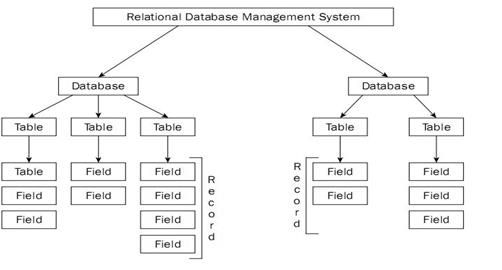
Object-oriented database –
- The information here is in the form of the object as used in object-oriented programming.
- It adds the database functionality to object programming languages.
- It requires less code however it uses more natural data and hence making it easier to maintain.
- Example - ObjectDB
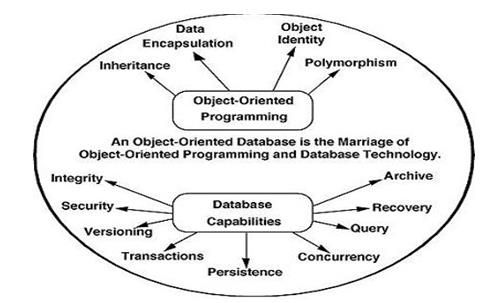
Object-relational database –
- Relational DBMS incorporating many concepts in the object database and currently are evolving continuously.
- They lead to a new class called extended relational database or object-relational database.
Hierarchical database –
- This represents parent or child relationships.
- Represents the records which are similar to the structure of a tree.

Network database –
- Mainly used on a large digital computer.
- If there are more connections, then this database is efficient.
- They are similar to a hierarchical database, they look like a cobweb or interconnected network of records.
- Examples are CA-IDMS (COMPUTER associates), IMAGE (HP).
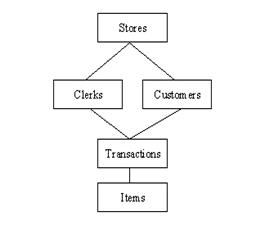
- Based on the number of users –
Single user –
- It can support only one user at a time.
- Mostly used with the personal computer on which the data resides accessible to a single person.
- The user may design, maintain and write the database programs.
Multiple users –
- It supports multiple users concurrently.
- Data can be both integrated and shared.
- For example, a student studying in a college will have all his details saved in the database.
- This database must be accessible to all the departments related to him.
- For instance, the library and the fee section department should have information about the student’s database.
- So in this case, we can integrate and even though database resides in only one place both the departments will have access to it.
- Based on the sites over which network is distributed
Centralized database system –
- The DBMS and database are stored at the single site that is used by several other systems.
- Hence we can say that the data is maintained on the centralized server.
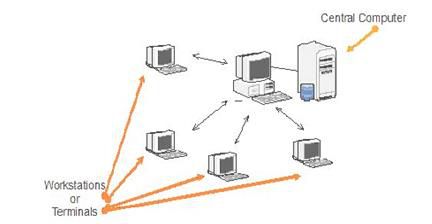
Parallel network database system –
- Majorly used in the applications that have the query to a larger database as this improves the processing speed of input and output.
- It holds the multiple central processing units and data storage disks in parallel.
Distributed database system –
- Here the data and the DBMS software are distributed over several sites but connected to the single computer.
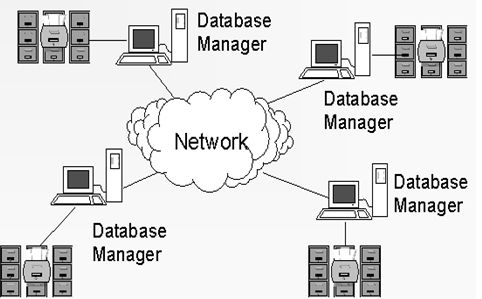
- Based on the cost –
Low-cost DBMS – It starts with a minimal cost which varies from $100 to $3000.
Medium cost DBMS – This cost ranges from $10000 to $100000.
High-cost DBMS – Expensive compared to others and usually more than $100000.
Functions
The main function of DBMS is to ensure data integrity and consistency of data in the database. There are ten main functions in the DBMS which are described below:
- Data Dictionary Management
- It stores the definitions of the data elements and their relationships (metadata).
- This helps to look up the required data component structures and relationships.
- Data Storage Management
- As the name indicates, this function is used for the storage of data.
- This involves performance tuning, which is related to storage and access speed.
- Data Transformation and Presentation
- This function helps to transform any data entered into the required data structures.
- The difference between logical and physical data formats is determined by using this function.
- Security Management
- Very important function as it sets rules on who can access the data.
- Users are provided with a username and password to secure information.
- It can also be secured sometimes through biometric (such as a fingerprint or retina scan) but these types of authentication tend to be more costly.
- This function also sets restrictions on who can see or use what.
- Multiuser Access Control
- Data integrity and data consistency are the basis of this function.
- It enables multiple users to access the database simultaneously.
- This is possible without affecting the integrity of the database.
- Backup and Recovery Management
- When there is a threat backup and recovery is brought to mind.
- For example, if there is a power outage, recovery management is how long it takes to recover the database after the outage, while backup management refers to the data safety and integrity.
- Data Integrity Management
- The DBMS enforces these rules to reduce things such as data redundancy.
- This removes duplications even though stored in more than one place.
- Database Access Languages and Application Programming
Interfaces
- It can access nonprocedural language.
- An example of this is SQL (structured query language).
- Majority of the DBMS vendors support SQL.
- Database Communication Interfaces
- Database communication, as the name indicated it helps to connect the different end-user requests through different network environments.
- An example of this can be easily related to the internet, as DBMS can provide access to the database using the Internet through any Web Browsers.
- Transaction Management
- This refers to how a DBMS must supply a method that will guarantee that all the updates in a given transaction are made or not.
- It follows the ACID properties.
A – Atomicity: It determines whether the transaction is an indivisible unit that is either performed as a whole and not by its parts, or not performed at all.
C – Consistency: Any transaction that occurs should alter the database from one constant state to another.
I – Isolation: Each transaction must be executed independently of one another.
D – Durability: All the successfully completed transactions are recorded permanently in the database and must not be lost due to failures.
MS – Access
Microsoft Access is used in Windows OS that uses a relational database management system.
Using this package, the following tasks can be performed:
- It helps to organize data into manageable units.
- We can enter, modify and locate data and use it effectively.
- In MS Access, the term Database refers to a single file that contains a collection of information.
- Each Access Database consists of tables, queries, forms, reports, macros and modules.
- All the filed names should be meaningful, without spaces or punctuation.
- For example - SNAME (surname), FNAME (first name), DOB (date of birth), ADDRESS1 (first line of address), TOWN, PCODE, PHONE etc.
- You cannot have two fields with the same name.
- Hence, for this reason, you should always choose a numeric or a counter field for the primary key: do not use surname as the primary key field.
Recap
Introduction to basic concepts of database systems
Data/information processing
INTRODUCTION TO DATABASES
- 1950’s and early 1960’s: Magnetic tapes
- Late 1960’s and 1970’s: Hard disk
- In the 1970’s: Relational Model
- In the 1980’s: Hierarchical database systems
- Early 1990’s: SQL Language
- Late 1990’s: Databases
- Few areas where some organizations use databases for their business activities in their day-to-day life.
Types of DBMS
- Database management systems are widely classified based on the data model, the number of users, cost and on the sites over which network is distributed.
Functions
- There are ten main functions in the DBMS which are given below: data dictionary management, data storage management, data transformation and presentation, security management, multi-user access control, backup and recovery management, data integrity management, database access languages and application programming interfaces, database communication interfaces, and transaction management.
MS – ACCESS
- Microsoft Access is used in Windows OS that uses a relational database management system.

